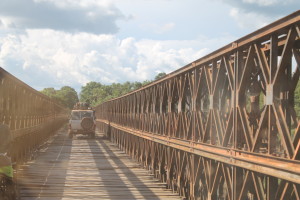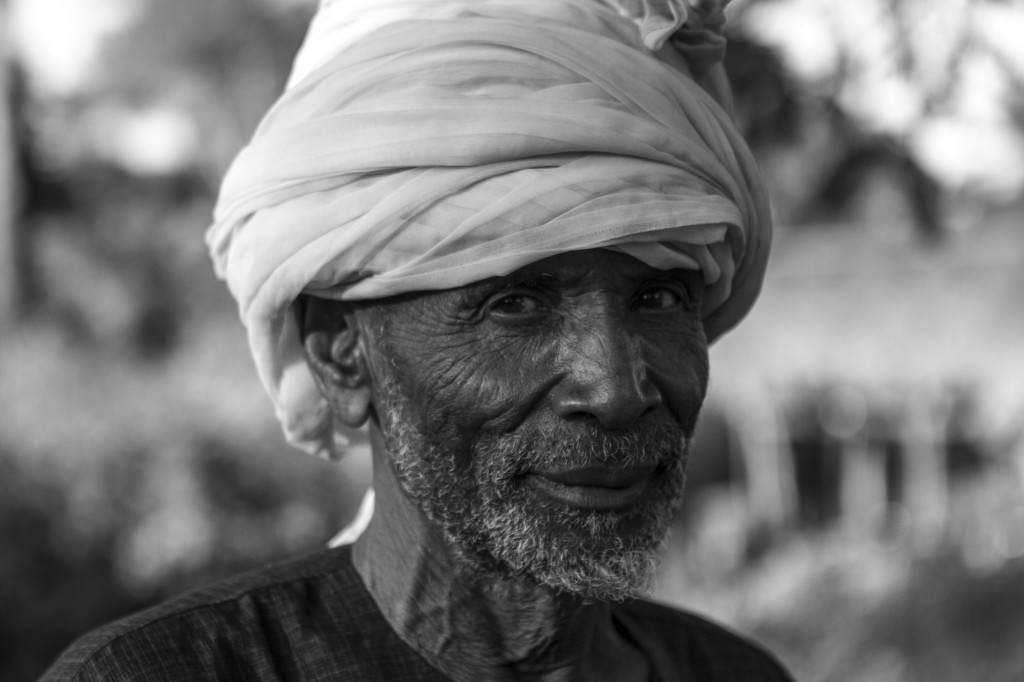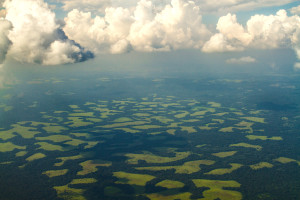Following a 44% decrease in LRA activity in 2013, the first quarter of 2014 has seen a significant increase in LRA attacks in areas of Democratic Republic of Congo (DR Congo) the group has been historically active in. The “Bangadi-Niangara Triangle” is a region that has experienced a high-volume of LRA attacks since 2008, and after a lull in 2013, this area is again being targeted by one or more LRA groups. These LRA assailants are launching frequent looting raids, crippling vital trade along roads, and displacing entire communities.
With such an alarming rise in activity in this area over Quarter 1 of 2014, there was skepticism that the LRA could be wholly responsible for the frequent attacks in the Bangadi-Niangara Triangle. Other suggestions were offered to explain the sudden rise in incidents from the area, including the possibility that there may be a separate, unknown armed group that was contributing to high volume of civilian-inflicted violence.
 So Invisible Children went out to Nambia, a community that has bore the brunt of the attacks in the Bangadi-Niangara area, to investigate and determine whether the LRA is in fact responsible for these attacks; and if so, to see how IC programs can help support these threatened communities. After a multi-day assessment of armed group activity undertaken by Invisible Children’s DR Congo team and Sean Poole, the Counter-LRA Programs Manager, we believe that the LRA activity in the area has been, if anything, underreported.
So Invisible Children went out to Nambia, a community that has bore the brunt of the attacks in the Bangadi-Niangara area, to investigate and determine whether the LRA is in fact responsible for these attacks; and if so, to see how IC programs can help support these threatened communities. After a multi-day assessment of armed group activity undertaken by Invisible Children’s DR Congo team and Sean Poole, the Counter-LRA Programs Manager, we believe that the LRA activity in the area has been, if anything, underreported.
The Nambia community has a thorough grasp of the indicators and tactics that distinguish the LRA from other armed groups or bandits, which was reflected in their documentation and reporting of these first quarter incidents. One critical distinction between LRA and other armed groups is the use of the Acholi language spoken by those in northern Uganda, Luo. Because of the significant LRA activity in Nambia over the past six years, many within the community recognize, understand, or even speak Luo. When our Invisible Children team asked one man in Nambia how he knew the LRA was speaking the Acholi language he replied, “My child was abducted for three years and speaks the language at home.”
When incidents reflect the tactics and techniques of LRA, but lack key indicators confirming them as the perpetrators (such as speaking Luo, certain dress, etc.), the Mbororo are often assumed to be the culprit. ‘Mbrororo’ is a loose term used to describe nomadic people who travel throughout central Africa in search of areas for their cattle to graze. They are often described as climate refugees as their nomadic area has been pushed further and further south as the north African desert continues to expand. Most of the Mbororo originate from northwest Africa and often have a combative relationship with local populations in DR Congo and Central African Republic. Nambia, however, has an Mbororo representative present in the community who deals with any issues that arise between townspeople and Mbororo in the surrounding area. Community leaders reported a relatively congenial, symbiotic relationship between the community and Mbororo and exhibited a clear understanding of the indicators that would separate LRA and Mbororo activity.

Mbororo are often nomadic, traveling throughout central Africa so their cattle can graze
While the presence of a group entirely separate from the LRA is possible, Invisible Children staff saw no evidence that the majority of reports of LRA activity near Nambia could have been executed by a group of local bandits. Invisible Children maintains the position that the LRA is highly active in Nambia and is utilizing trails between the Niangara/Bangadi and Ngilima road networks to attack travelers and small communities without warning.
Contributing to our limited understanding of this particular LRA group, is that this group has seemingly adopted the tactic of short-term abductions. Much of the knowledge counter-LRA actors use to build community protection mechanisms, comes from formerly abducted persons who are able to escape the LRA and provide critical information. The purpose of this LRA group’s short-term abductions is to use individuals as porters, but more critically, not holding anyone captive for more than 12-18 hours prevents outsiders from understanding where and how the LRA group is operating.
 However, this week a young, Congolese girl escaped from the same group that we believe to be targeting communities in this area. Having been abducted in 2011 in DR Congo, this 16 year old girl spent three years with the LRA but was finally able to escape during an LRA attack on a village near Ngilima. She was able to provide information about the LRA group, including that she and others listened to Invisible Children supported defection broadcasts from our FM radio stations in Faradje and Dungu, DR Congo. We are grateful for her brave return and celebrate with her as she is in the process of being reunited with her family in the next few weeks.
However, this week a young, Congolese girl escaped from the same group that we believe to be targeting communities in this area. Having been abducted in 2011 in DR Congo, this 16 year old girl spent three years with the LRA but was finally able to escape during an LRA attack on a village near Ngilima. She was able to provide information about the LRA group, including that she and others listened to Invisible Children supported defection broadcasts from our FM radio stations in Faradje and Dungu, DR Congo. We are grateful for her brave return and celebrate with her as she is in the process of being reunited with her family in the next few weeks.
Over the next few months, Invisible Children hopes to invest in the community of Nambia and establish a Community Defection Committee there, to increase community resilience and continue to help drive the defection and escape of LRA combatants in the Bangadi-Niagara area.
Think people should hear about this?